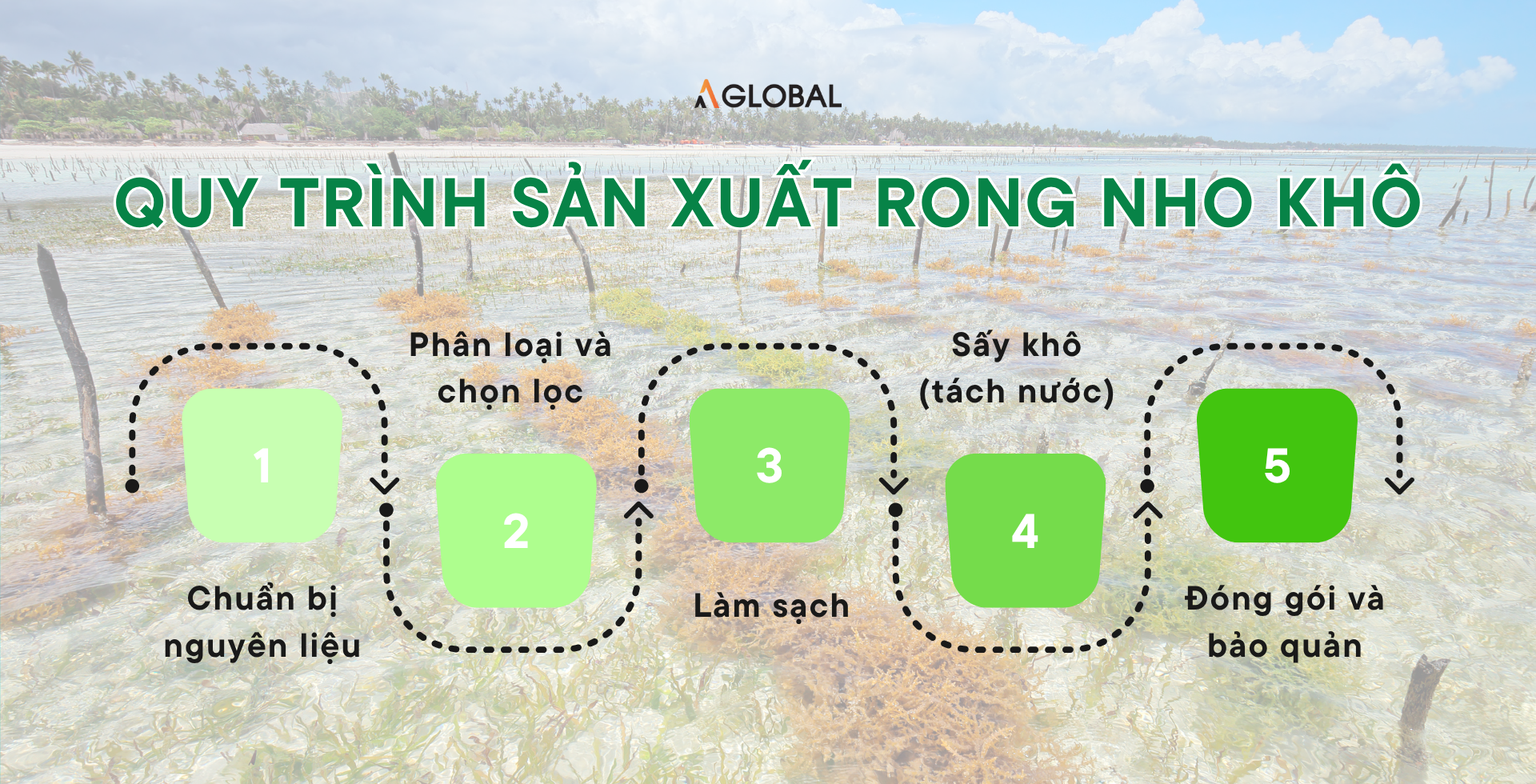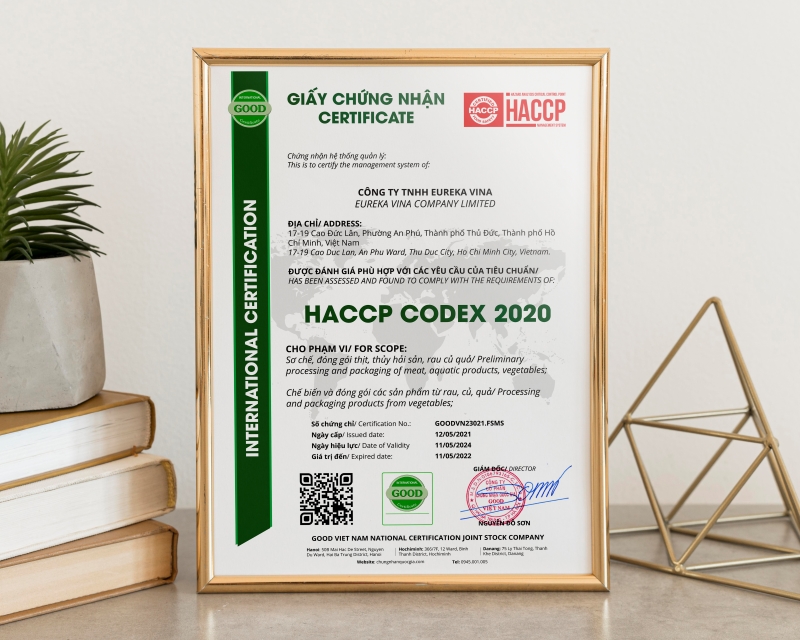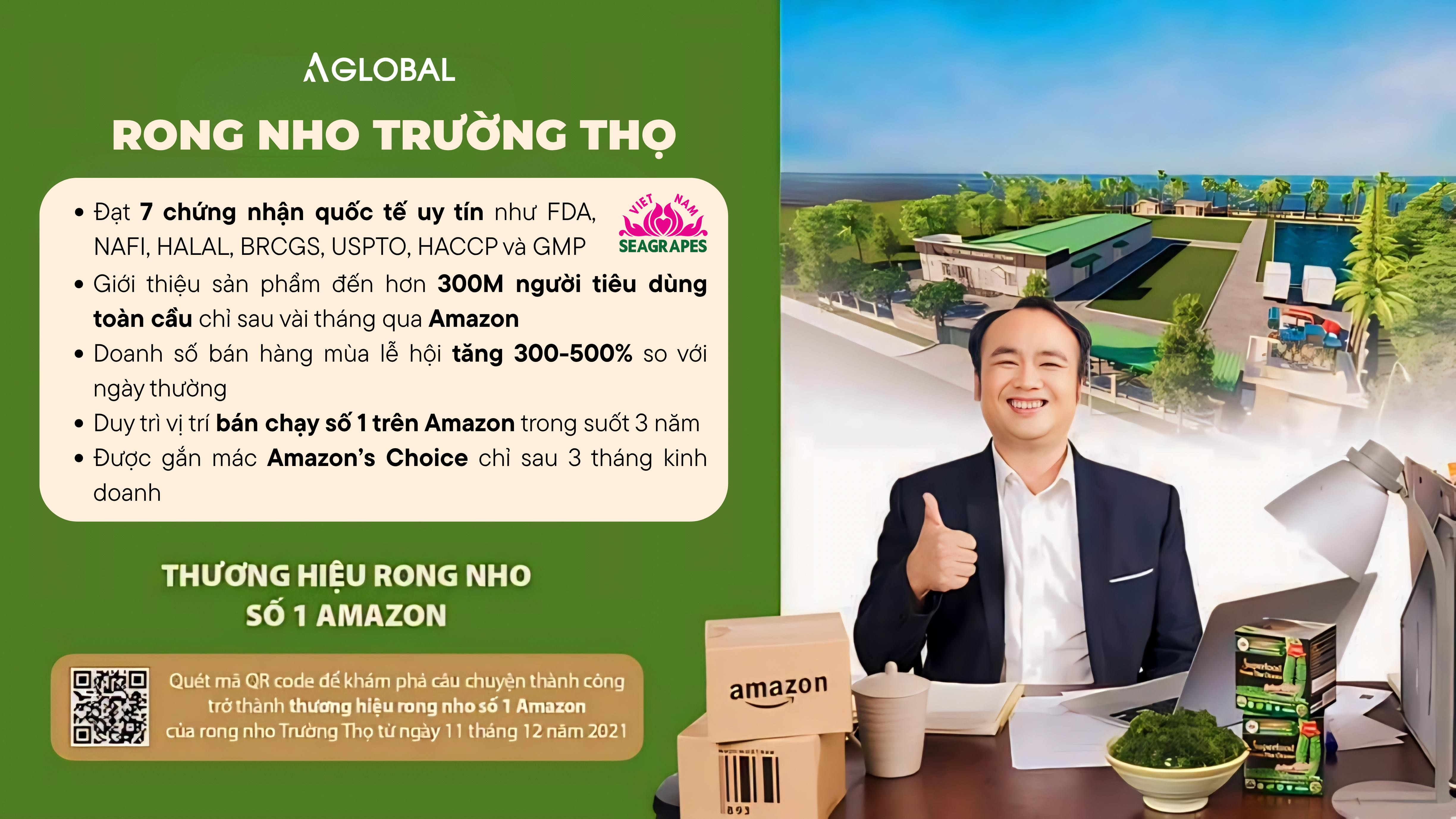
Vietnamese dried seaweed: A promising product for global export
Vietnamese dried sea grapes are increasingly favored due to their high nutritional value, healthiness, and suitability for the low-carb eating trend among American consumers. With its natural advantages, this product holds significant export potential. Discover effective strategies to export Vietnamese dried sea grapes to international consumers in this article.
1. Discover the Value and Production Process of Dried Sea Grapes
Dried sea grapes are gradually becoming one of the most popular marine agricultural products both domestically and internationally thanks to their high nutritional value, unique flavor, and long shelf life. To better understand the potential of this food, let’s explore: What are dried sea grapes? And what is the production process of dried sea grapes?
1.1. What are Dried Sea Grapes?
Dried sea grapes, also known as dehydrated sea grapes, are products processed from fresh sea grapes. Sea grapes are a type of marine algae resembling small clusters of grapes and are often referred to as the “green caviar” of the ocean due to their high nutrient content.
Unlike fresh sea grapes, which can only be stored for a short time, dried sea grapes are produced using modern dehydration technology, which preserves almost all the nutritional value while extending shelf life for several months.
Read more: Vietnamese Sea Grapes: The Green Superfood with Export Potential
1.2. Production Process and Nutritional Value of Dried Sea Grapes
To produce high-quality and safe dried sea grape products, the production process is carried out strictly as follows:
 5-Step Production Process of Dried Sea Grapes
5-Step Production Process of Dried Sea Grapes
Step 1: Raw Material Preparation
Fresh sea grapes are harvested from certified farming areas and quickly transported to production facilities for preprocessing to ensure freshness and maintain natural green color.
Step 2: Sorting and Selection
Sea grapes are carefully sorted, keeping only clusters with uniform size and plump, intact beads to ensure consistent quality in the final product.
Step 3: Cleaning
Selected sea grapes are thoroughly washed and sanitized with clean water to remove impurities, sand, and microorganisms on the surface.
Step 4: Drying (Dehydration)
Sea grapes are dried at appropriate temperatures to gradually remove water without altering color or flavor. This process achieves the standard dryness, prolongs shelf life, and preserves the natural crisp texture.
Step 5: Packaging and Storage
After drying, sea grapes are cooled, packed in sealed packaging to prevent moisture, labeled, and stored under standard conditions before distribution to domestic and international markets.
Thanks to standardized production, dried sea grapes maintain uniform quality, meet domestic and international market requirements, and preserve high nutritional value, offering numerous benefits:
- Vitamins A, C, and E: strengthen immunity, slow cell aging, support skin regeneration, and protect eyesight.
- Unsaturated fatty acids (DHA, EPA, ALA): reduce bad cholesterol, improve blood vessel elasticity, help prevent cardiovascular disease, and support brain function.
- Essential minerals such as calcium, magnesium, zinc, and iodine: strengthen bones and joints, balance hormones, and enhance thyroid function.
- Antioxidants and fucoidan compounds: stimulate immunity, help prevent cancer, and reduce inflammation.
- High fiber, low sugar, and low calories: improve digestion, support weight management, and suit diets for people with diabetes or on low-carb regimens.
2. Market Status and Global Export Potential of Dried Sea Grapes
Amid the trend of green and sustainable food consumption, Vietnamese dried sea grapes are gradually asserting their position in international markets. Currently, what is the production volume, key export markets, and the opportunities and challenges for Vietnamese enterprises in exporting dried sea grapes?
2.1. Production Volume and Key Export Markets
According to the Ministry of Agriculture and Rural Development, Vietnam currently has about 16,500 hectares of seaweed farming, producing 150,000 tons per year. With the National Fisheries Development Strategy, the government aims to increase output to 500,000 tons by 2030. With a potential area of 900,000 hectares, sea grapes are seen as a field with much room for production and export expansion.
Regarding key export markets, Vietnam currently exports dried sea grapes to major markets such as the United States, South Korea, Japan, and in recent years has expanded to markets like Canada, Taiwan, and Singapore.

Export Price of Vietnamese Dried Sea Grapes (Source: Tridge, 2024)
Notably, in the U.S. and international markets, the export price of Vietnamese dried sea grapes increased significantly in 2023–2024. In 2023, prices ranged from USD 8.50–10/kg. By 2024, prices rose to approximately USD 11.50/kg, reflecting strong foreign demand and the potential for further price growth in the coming years.
2.2. Opportunities and Challenges for Vietnamese Enterprises
Vietnamese dried sea grapes face numerous opportunities as international consumers increasingly prefer healthy products:
- Growing green consumption trend: Global consumers favor natural foods, providing opportunities for Vietnamese dried sea grapes.
- Cost and quality advantages: Abundant domestic raw materials and self-production capabilities give Vietnamese products a competitive edge over other countries.
- Trade agreements expanding opportunities: EVFTA, RCEP, and CPTPP reduce tariffs and simplify export procedures.
- Building a national brand: With the “green superfood” image, enterprises can affirm Vietnam’s marine agricultural identity and credibility.
Challenges include:
- Strict international standards: Markets such as the EU, U.S., and Japan require rigorous hygiene and food safety certifications.
- Lack of overseas market experience: Many enterprises still lack international marketing skills, resulting in lower export efficiency and profitability.
- Strong competition: Japan, the Philippines, and Indonesia are long-established competitors, requiring Vietnam to meet high standards in both quality and branding.
In conclusion, Vietnamese dried sea grapes have great potential and opportunities to expand internationally. To succeed, enterprises need to focus on improving quality, gaining export experience, and building a strong brand to overcome competitive challenges.
Read more: Strategic Directions for Exporting Vietnamese Seaweed to the U.S.
3. Strategies to Enhance Brand and Expand Dried Sea Grape Exports
Brand enhancement and export expansion strategies play a key role in maximizing the international market potential of Vietnamese dried sea grapes while overcoming quality and competitive challenges.
3.1. Ensure Product Quality with International Certifications
To gain international consumer trust, enterprises need to obtain international food safety certifications such as HACCP, ISO 22000, FDA, FSMA, FSSC 22000, GMP, BRCGS, Halal, Kosher… These certifications not only ensure products meet strict standards but also serve as credible proof for the brand, facilitating access to demanding markets such as the U.S., Japan, and the EU.

HACCP Certification Sample
In addition to certification, applying strict production processes from harvesting, processing, to packaging preserves nutritional value and the characteristic flavor of dried sea grapes. This is decisive for maintaining consistent quality and enhancing competitiveness in international markets.
Read more: Detailed Procedures for Obtaining Certificates of Origin 2025
3.2. Build Brand Reputation through Quality and Product Story
Product quality is necessary for Vietnamese sea grapes to venture abroad, but brand positioning is sufficient to help the product establish a foothold in the market. Enterprises should skillfully convey stories about natural origins, sustainable farming, and nutritional value, emphasizing environmental protection and community contribution.
These stories can be shared through images, videos, social media, or digital campaigns. When told vividly and authentically, they not only enhance brand recognition but also build trust with international customers, making Vietnamese dried sea grapes a reliable choice and improving competitiveness globally.
Read more: Product Development Strategy: 7 Key Stages Determining Success
3.3. Multi-Channel Development and Leveraging Cross-Border E-Commerce
Diversifying distribution channels is crucial to expanding export markets. In addition to traditional exports through importers, enterprises should boost sales on cross-border e-commerce platforms, especially Amazon, which attracts an average of 2.7 billion monthly visits with an average session duration of 10 minutes 30 seconds.
A successful case study of exporting dried sea grapes internationally via Amazon is Truong Tho Sea Grapes. Through high-quality products, professional online customer engagement, and Amazon’s FBA support, Truong Tho quickly succeeded in the U.S. market and achieved notable results.

Some Achievements of Truong Tho Sea Grapes Exported via Amazon
To optimize business on Amazon, enterprises can cooperate with reputable partners such as AGlobal, a unit specializing in global export and Amazon sales solutions. With over 200 successful exporters on Amazon, AGlobal is confident in supporting you to set up your store, manage logistics, and run effective digital marketing.
Read more: Amazon FBA Fulfillment – Optimal Sales Solution for Enterprises
4. Conclusion
Vietnamese dried sea grapes currently hold wide export potential in international markets. This is the perfect time for Vietnamese enterprises to invest in raising standards and building a reputable brand. With the knowledge provided in this article, start today to bring Vietnamese dried sea grapes to conquer global markets!
AGlobal – The Best Cross-Border E-Commerce Solution for Enterprises.
Register for free 1-on-1 consulting by industry and business sector here!
